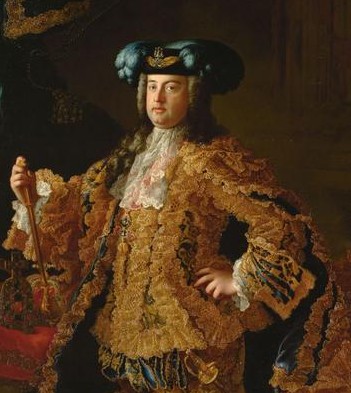Introduction
The complete exports of Florentine Minchiate in the time interval 1729-1762 is reported in this note. The main interest is that the documents that we can study for this century are fewer than for the following one, and, in particular, the book here described is the unique specimen that I could find of its kind.
Libro di oblighi
The source for all the information reported here is a single book, No. 3019, belonging to the archive group “Camera e Auditore Fiscale”. The “Camera e Auditore Fiscale” institution controlled the various incomes of the court. Documents on playing cards in this series have been compiled and collected using various systems. Particularly rich for us is the last part of the section, in which several books and folders concerning playing cards have been collected, for a time that looks promising for finding new information.
Let us focus our attention on just one item, the last of the series, a book with a long title: “Libro di oblighi per il ritorno delle licenze di carte da gioco senza bollo mandate fuori di stato di S.A.R.”
The dates of the shipments recorded for cards sent abroad, and thus without stamps, are from 1729 to 1762, thus approximately matching the second third of the 18th century, not a short interval of time. It must be noted that for 1729 the records only begin on 21 July, whereas for 1762 we only have two shipments, the first in January, the second and last of them all on 4 February.
It may be useful to remember that in 1737 the Medici ruling family of the Grand Duchy of Tuscany was substituted by the House of Habsburg-Lorraine. From the limited point of view of the playing card exports, examined here, no remarkable changes are observed in correspondence to that demarcation point.
The book studied is bound in vellum paper and has dimensions 22x31cm with a thickness of 7cm. In the initial page the book is stated to contain [143 or] 243 folios, but we find there 240 folios numbered, followed by about 50 further ones, unnumbered - I have inserted the missing numbers in the tables below.
Promising for further research may be the fact that this book was marked as B. Now, we cannot be sure that it was then followed by a C volume, but we can be fully confident in the existence of an elder A brother, which would have been compiled under the Medici Grand Dukes. Unfortunately, a similar confidence cannot be extended to the possibility that this A book is still kept in the ASF.
Usually, each page contains here two notes of shipment, thus making around one thousand records of playing cards sent abroad. These cards were usually sent by a given person, who had obtained the corresponding authorisation; he could be a given personage, an agent, or just a carrier. (As a rule, two different persons are mentioned.) In some cases, we find the cardmaker himself involved, as reported below.
The problem is that the whole book is not compiled as a series of lists with the relevant data clearly noted by an employee, who recorded the information in a fine handwriting. We have instead for each record part of the page written in a verbose way, with no emphasis on the information that is the most interesting to us.
Moreover, the handwriting is that of the agent or the carrier, thus the most various and as a rule clearly denoting a low degree of education by the writer. (This I have particularly noted, because recently I have encountered some difficulty in reading handwritten texts of the 15th century, and I did not expect to find similar obstacles in the 18th !)
The shipment was accompanied by a waybill, to be checked by the customs staff at the frontier, and returned within fifteen days to the central office in Florence, with the confirmation that the customs duty had been paid. A few of these bills are loosely inserted in the initial part of the book.
The standard format was printed as follows:
Adì…….. di………. Firenze
Si concede licenza al……………………………….
che possa mandare…………………………………….
…………………………………………………………
il tutto senza bollo. Con obbligo a detto…………….. di far tornare la presente licenza in termine di giorni quindici da questo sopraddetto giorno, con l’attestazione del Doganiere dell’ultima Dogana del passo per fuori di Stato di S.A.R. di dette Carte, sotto pena di scudi trenta, valuta di Carte, e bollo, non la presentando dentro detto termine al Fisco con tale attestazione. E la presente serva per questa volta solamente, quale sara sottoscritta dall’Eccellentissimo Sig. L.T. Fiscale Soprintendente, e segnata col solito contrassegno dell’Appaltatore.
|
Indeed the usual mark of the concession holder is present in the waybills preserved, together with his signature below that of the Soprintendente. It is the same as we can see stamped on the cards of that time, two rampant lions topped with a fleur-de-lys.
Practically the same expressions of the waybill are repeated in the book under examination, written by the carrier, or by someone, who was able to write on his behalf, when the carrier was illiterate. Usually a conclusive sentence is added, such as “In fede: Mano propria” as a guarantee that the contract had been written and signed by the agent or the carrier in person.
In the course of time the fine of 30 Scudi was changed into 300. This occurred in around 1742, and it seems that for a short time both fines coexisted, probably depending on the amount or the destination of the cards.
A similar behaviour had to be followed in the case of unstamped cards imported, and also for unstamped cards that were only in transit through Tuscany. The corresponding duties varied, but everything had to be recorded in the same book.
The records
For all deliveries we find the indication of the maker of the cards, and usually their quantity and kind. I did not copy below the names of the agents and carriers involved. Some of them we find recurrently, and I am wondering why they did not carry more packs in a given delivery; supposedly, the offices did not allow shipments of remarkably greater amounts of cards.
Among the persons who obtained the authorisation for export, and sometimes among the carriers, we find nobles and high priests. On the other hand, there are cases in which a third person appears as writing and signing on behalf of an illiterate carrier.
In some cases, the place of the customs house at the country border is indicated explicitly, thus providing additional information on the route followed. In a few cases, it appears that the destination only represents an intermediate stage; as occurs for Leghorn. Similar cases could be present for other shipments, but we have no hint for determining the continuation of the route, if any.
The previous statements are hopefully enough to explain that I have used this book just to derive the essential part of the whole information. It will be easy for anybody interested enough in this study to examine this book again and complete my transcription, listed below, and amend any possible mistake in reading the original text.
Minchiate
The following tables report the relevant information on card packs shipped to foreign states and countries, or coming from abroad. In a few cases, the cards are indicated as just being in transit through Tuscany, from a different state to another one.
As for their kind, we can be certain that common cards were the exception and Minchiate the rule. This is not an unexpected evidence, if one considers that precisely Minchiate was the typical Florentine card pack. What might be unexpected is that Florence still was a remarkable source for this particular production at the time, because we know that this special pack was produced by then in other towns too, at least in Bologna and Rome.
If a new fashion of playing Minchiate once flourished in a given town in the presence of active cardmakers, the task of producing the corresponding pack could not be too difficult for them. What we find, is however that the Florentine production was still active and had a wide market.
All Minchiate packs recorded came from Florence, with a few exceptions coming from Bologna. Interesting may be the name of Germini, still often used for them by Molinelli, who also often used the old terms of Para or Paia for packs, instead of Mazzi.
Other cards
As for the packs of ordinary cards that we find recorded, we have to distinguish them in two categories, those of Florentine production and those arriving from abroad. Apart from a few exceptions, all the ordinary cards coming from Florence were those made in Florence by Molinelli and sent to Siena without being stamped.
They were usually sent together with Minchiate, but were separately recorded. Their number was much greater than that of the Minchiate packs, clearly indicating that the game of Minchiate involved a minority of the local players, as on the other hand was the case in Florence itself.
The Florentine “ordinary” cards sent to Siena were differently indicated, but we can easily imagine that sometimes a different attribute denoted the same kind of cards. Two such attributes could be assigned to any kind of Florentine cards different from Minchiate, Fine and Basse. However, it seems that here Fine was mostly applied to cards with Italian suits, whereas Basse was used mostly for cards with French suits.
Easier to understand is when they are indicated as “picche e fiori” (or “picche e cuori”) for the French and “spade e bastoni” for the Italian suits. The attribute “francesi” could be used for cards coming from abroad, but also from Florence. Possibly, some difference could be indicated by the attribute “alla francese” that we find for similar cards made in Bologna.
Similarly, cards made in Bologna and indicated as “da ombre” or “da tresette” could be variants of the Italian and French suits respectively – if they did not exactly correspond to those made in Florence.
Sometimes the “ordinary” cards are indicated without any attribute, just as playing cards, Carte, or Carte da gioco. This mainly occurs in the last years, when the “picche e fiori” model practically became the only kind sent to Siena.
Some attention is required for the attribute “forestiere” assigned to some of these cards. If we think to its meaning as foreign in terms of today, this attribute might be interpreted as coming from abroad, and France can be suspected as the only provenance. However, the term could then be attributed equally well to any state outside of Tuscany, and thus those cards could arrive from nearer places.
If they arrived through Leghorn, they could have been produced in France, but also in Finale Ligure (as indicted in some cases) or Oneglia, or other little states in which the production of playing cards was flourishing at the time. Sometimes the number of packs is not indicated, especially for foreign cards in transit; in these cases we can find the record, instead of the pack numbers, of the weight of the plumbed box in transit.
A very special case is represented by the appearance of tarots in these lists. This only occurs once, in 1753, for a shipment from Bologna to Florence, then forwarded from Florence to Messina. This record confirms that the game was not in use in Florence: evidently, these cards were not addressed to Florentine players. Interesting is the attribute provided to these tarots: “alla milanese” – they came from Bologna, but were not the local “tarocchino bolognese”; it apparently was the 78-card pack used in North Italy, and especially in Milan.
Further details
In the Appendix, I provide a table for each year involved. The date is indicated in the format mmdd, which has clear advantages for ordering the lists. In the first half of the century, for the dates earlier than 25 March, I have changed the year ab Inc. into the following one, according to the current usage.
In the second column there is the number of the corresponding folio. Then, the Florentine maker of the cards is always indicated, but he often was either Francesco Rossi (here marked as ROS) or Antonio Giovanni Molinelli (MOL). Later on, I am using the abbreviation for other members of the same family, successors in the production and trade. In the last years of the records, Benedetto Piattoli (PIA) appears as a third Florentine cardmaker, together with the two already mentioned.
When the maker’s name is followed by an asterisk, this means that not only these cards were produced by the given cardmaker, but also that he in person cared for that delivery. I have used this sign however only for the particular case of Minchiate and ordinary cards sent to Siena by Molinelli. In Siena they had an independent way to control the trade of playing cards and the corresponding taxes. Molinelli was not only the corresponding cardmaker; he acted at the same time as the concession holder for Tuscany.
From this information for Siena we can deduce the portion of Minchiate in comparison with the ordinary cards, which were not exported into other places. We can also verify how rapidly the French suits replaced the Italian suits in the Florentine cards.
Usually the records refer to dozens of packs; in some cases, just packs or fractions of dozens are indicated – I have used numbers of packs everywhere. If other cards were shipped or received together with or instead of Minchiate, they are indicated separately in the yearly tables after a + sign.
As for the kinds of the cards, it is obvious that to be welcome in far places these cards should have been typically Florentine. We have however to take the cards from Bologna into account. It is known that cardmakers were very active in Bologna, and several “Florentine” Minchiate of the time that can be found in public and private collections are known to have arrived precisely therefrom. We find here a confirmation, even if Minchiate from Bologna we only see as an exception here.
Before this finding, one could even suppose that in the 18th century Bologna was the main source of Minchiate for all the places where the game flourished. Now, it is not possible for me to determine the fraction of Minchiate produced in Florence, Rome, Bologna, or any else possible producing centre – let us be satisfied with a complete knowledge of the Florentine exports at the time.
Places of destination
What is certain is that Florence, the town of origin, had not lost its tradition. Another confirmation can be considered the record of Florentine cards shipped to far countries. Instead of a few towns involved in the trade, we find a lot of places. They confirm that Minchiate enjoyed by then a kind of simultaneous vogue in several countries, in addition to their main destination into Rome, where we know that the game was flourishing.
Apparently, this did not reach the majority of the population, because the amount of cards shipped was usually small. This may confirm that the kind of players was restricted to the higher social classes, to the courts in particular (as most card historians still suppose to have occurred for Trionfi in the 15th century). Malta too may be here of some interest, considering that the island was ruled by the Knights Hospitaller.
For all the destinations, I have used their Italian name, as written in the documents, supposing that understanding this will not be a problem. In a few cases, instead of the town, we only find the country recorded, as France, Spain, or Germany. This may be too vague for us, especially in the case of Germany, where the places of destination could be various, located in all the four cardinal points of the country. Most European capital cities are present, even if only Lisbon receives a surprisingly great amount of Minchiate, only second to Rome.
Some towns that we could easily expect appear together with others that we hardly could imagine to find here. The shipments to France are few, and only Paris and Marseille are mentioned in particular, with a few packs. Spain, and Madrid in particular, are also present in the lists. Cadiz is evocative, letting us think of America as a possible but certainly unusual destination of Florentine Minchiate.
Somewhat easier to expect could be the Northern destinations outside of Italy, such as Vienna, Cologne, Dresden, or more generally Germany. We actually have from these places information on Minchiate playing, even if somewhat later on.
Within Italy, remarkable may appear the Southern destinations to Naples, Messina, and Palermo. The fundamental result is that again a capital city is involved, because we find Rome as the addressee of roughly two thirds of the whole Florentine export. As in most other cases, it is hard to establish whether this actually corresponded to the final destination, or if an unknown fraction of the Minchiate sent to Rome were then shipped farther into other places.
What is certain is that a significant amount of Minchiate were addressed to minor centres of the Papal State too. We find there a lot of places that were outside of Tuscany just by a few miles, or even in marginal territories of Tuscany itself.
In some cases they belonged to fiefs ruled by noblemen, such as Chitignano by Count Ubertini. To think of some smuggling is plausible, but the amount of the cards is rather limited and may be more appropriate if related to a local tradition of playing the game, possibly enjoying the privilege to use unstamped cards.
Some of the minor places mentioned have changed name in the meantime, such as Scaricalasino now Monghidoro, or Portolongone, now Porto Azzurro in the island of Elba. Qualandro is plausibly associated to the castle of Montequalandro, near Tuoro sul Trasimeno. Other minor places can still be found in any atlas or directory; with the possible exception of Civitella, a name which may correspond to various small towns, it will not be a problem to locate all of them – in case, the problem will consist in explaining why Minchiate were specifically addressed there.
The number of places on the coastline is noteworthy. This may in part correspond to stages for further shipment. Somewhat surprising may be Viareggio, which only later on has become a renowned vacation resort. At the time it was however the only place on the seaside for the citizens of the Lucca republic and the land nearby was already under reclamation works.
The cumulative Minchiate exports
The essential information from the whole book examined is reported in the following tables ...
[Editor's Note ] It wasn't a good solution to present so much tables on a single webpage, so we decided to transfer it to a small web project of its own ....

click it
... 62517 Minchiate decks (period 1729 - 1762), from which 72.2 % went to Roma, 11.2 % to Siena, 12.6 % to the rest of Italy and 4.0 % = 2485 to all others outside of Italy. Between them 40 decks for Colognia at 5th of January 1731 (the earliest known Minchiate deck in Germany, if they ever reached its destination; Cologne is the home of the Trionfi redaction and we're exited), 24 decks for Vienna at 22th of September 1729 a little earlier (as far I'm informed, this is decades before the earliest known Tarock note in Austria), 4 decks for Londra = London in England at 3rd of October, 1753 (this should be also the "first") and some more interesting details.[End of Editor's Note] |
BIG TABLE (1729-1762)
1729
- 1730
- 1731
- 1732
- 1733
- 1734
- 1735
- 1736
- 1737
1738
- 1739
- 1740
- 1741
- 1742
- 1743
- 1744
- 1745
- 1746
1747
- 1748
- 1749
- 1750
- 1751
- 1752
- 1753
- 1754
- 1755
1756
- 1757
- 1758
- 1759
- 1760
- 1761
- 1762
.... The fact that almost six hundred pages of a book can be summarised to such an extent should not induce us to devalue the relevance of this new information. There is an average of about two thousand packs of Minchiate exported in each year, for one third of the 18th century.
These were only the Minchiate packs exported, and at the time the game was still a favourite one in Tuscany. By the way, in many places where most card games were forbidden, playing Minchiate was allowed, or at least required a smaller duty to be authorised.
The main difference in comparison with previous times is that in the 18th century Minchiate enjoyed some fashion in other towns too, to begin with Rome - as these records can now confirm. Clearly, as a centre for further spread of the game, at the time Rome could act more efficiently than Florence itself.
Conclusion
New quantitative information has been provided on the exports in the years 1729-1762 of Minchiate produced in Florence into many foreign towns. The records, copied from a single book, provide moreover useful information on the deliveries of ordinary cards to Siena and on other cards that were imported or in transit through Tuscany in the same years. In principle, we can trust for previous and following years in the existence of other such books, which I could not yet discover.
|

Gian Gastone de' Medici
Grand Duke of Tuscany (1723 - 1737)

Duchess Violante Beatrice of Bavaria
(1673 - 1731)
sister-in-law of Gian Gastone,
participated in the reign

This deck, the socalled Ancient Minchiate Etruria, is estimated to have been made in 1725, so during the reign of Gian Gastone. He was declared Grand Duke in 1723, and often a new title was connected to the producion of a noble playing card
deck, so in the case of Leonello, signore of Ferrara, in 1442, and duke Alfonso d'Este in 1505. Perhaps Gian Gastone and Violante took some influence in the production of this deck.

Francis III. of Lorraine,
then grand duke of Tuscany,
later Emperor (1745 - 1765),
husband of Maria Theresia since 1736,
didn't give much attention for Tuscany.
Minchiate Exports 1729-1762
Roma
Siena
Lisbona
Perugia
Città di Castello
Genova
Bologna
Napoli
Chitignano
Ferrara
Venezia
Viterbo
Vienna
Vernio
Piombino
Lucca
Civitavecchia
Palermo
Costantinopoli
Forlì
Portolongone
Modena
Orbetello
Spagna
Viareggio
Orvieto
Malta
Cadice
Ancona
Pesaro
Portogallo
Colonia
Marsilia
Urbino
Messina
Germania
Qualandro
Civitella
Livorno
Trieste
Pietrasanta
Francia
Madrid
Faenza
Città della Pieve
Dresda
Pisa
Milano
Parigi
Scaricalasino
Londra
TOTAL
|
45140
6989
1518
1385
1306
656
537
449
387
380
354
346
283
276
212
182
152
150
144
144
120
114
110
108
100
100
96
90
66
66
60
52
48
42
36
34
30
25
24
24
24
24
24
18
16
12
12
12
12
6
4
62517
|
RED signifies locations outside of Italy.
|
|




